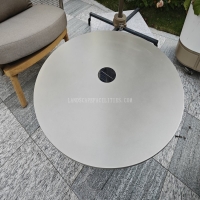Welcome to the website for landscape facilities products and knowledge.
How does HPL material resist bending in landscape trash bins?
HPL (High-Pressure Laminate) material is widely used in landscape trash bins due to its exceptional resistance to bending and deformation. This durability stems from its unique composition and manufacturing process. HPL is created by fusing multiple layers of resin-impregnated kraft paper under high heat and pressure, resulting in a dense, rigid structure that withstands mechanical stress.
In outdoor settings, landscape trash bins are exposed to various forces, including wind, impact, and weight loads. HPL's layered construction distributes these forces evenly, preventing localized bending or warping. Additionally, the material's moisture-resistant properties ensure it doesn't weaken or swell when exposed to rain or humidity, further enhancing its structural integrity.
Compared to traditional materials like wood or metal, HPL offers superior dimensional stability. It doesn't expand or contract significantly with temperature changes, reducing the risk of bending over time. The surface layer also resists scratches and abrasions, maintaining its appearance and functionality even in high-traffic areas.
For landscape architects and urban planners, HPL trash bins provide a low-maintenance, long-lasting solution. Their bending resistance ensures they remain functional and aesthetically pleasing for years, even in harsh weather conditions. This makes HPL an ideal choice for public spaces, parks, and commercial landscapes where durability is paramount.
Related search:

Recommendation
Outdoor stainless steel table with solar-powered ambient lighting feature - excellent design.